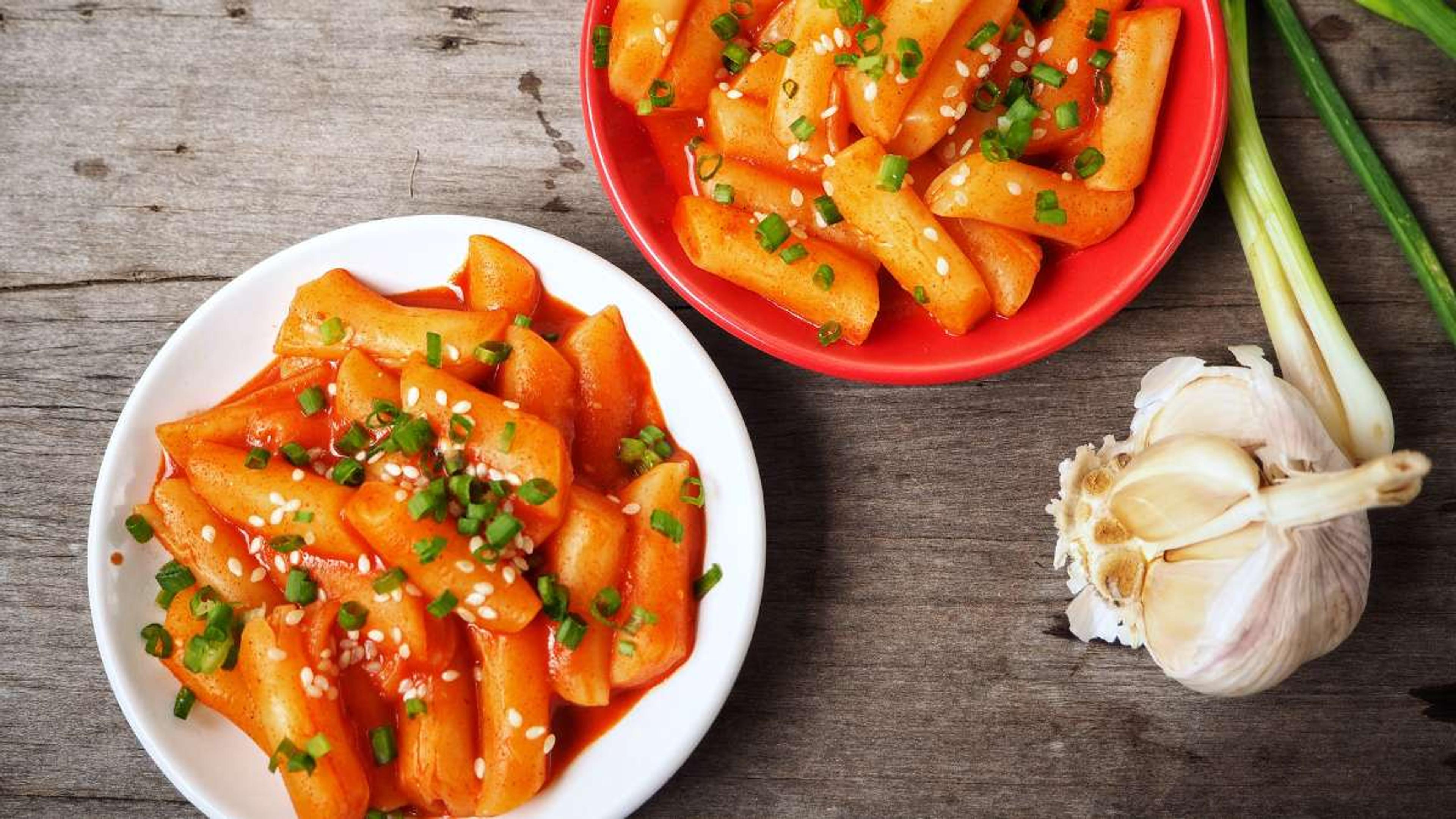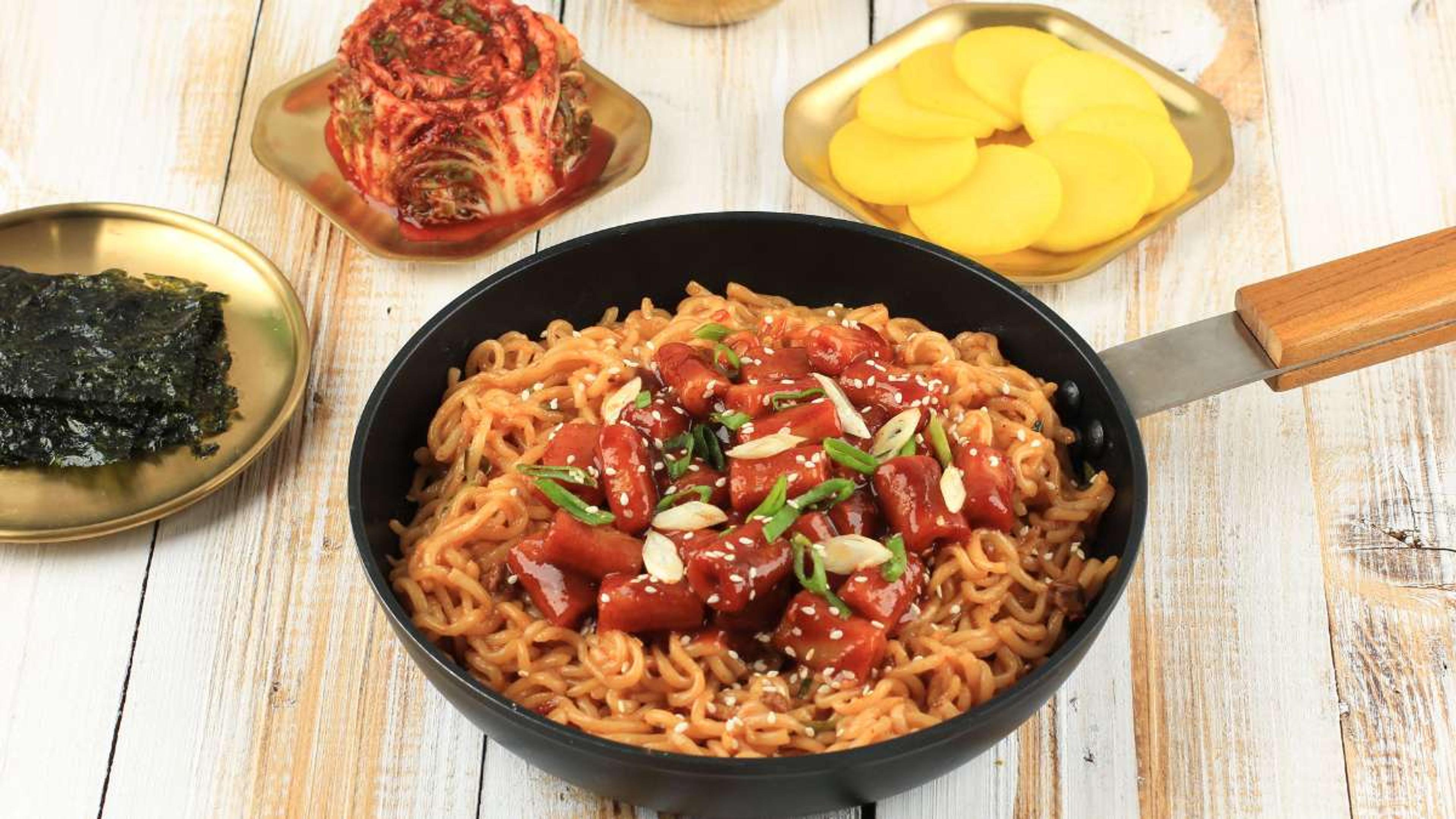Is Tteokbokki Vegan? Here's What You Need To Know

- Key Takeaways
- Overview of Tteokbokki in Korean cuisine.
- The vegan concern with traditional dishes.
- Core Ingredients of Tteokbokki
- Vegan Alternatives for Tteokbokki
- Popular Vegan Tteokbokki Recipes
- Tips for Ordering Vegan Tteokbokki
- Conclusion
- FAQs
Are you a vegan who loves Korean cuisine but unsure if Tteokbokki is suitable for your diet? Don't worry, we've got you covered! In this blog post, we'll explore the question "Is Tteokbokki Vegan?" and provide all the information you need to satisfy your taste buds without compromising your dietary choices.
Get ready to discover how you can enjoy this delicious and popular Korean dish in its vegan-friendly form. Let's dive in!
Key Takeaways
- Tteokbokki is a loved spicy Korean rice cakes dish made with rice cakes and gochujang (red Korean chilli paste), but traditional recipes often include non-vegan ingredients like fish cake and anchovy broth.
- To make Tteokbokki vegan, you can substitute vegetable or kelp broth for the anchovy broth and omit or replace the fish cake with vegan alternatives like tofu or mushrooms.
- There are vegan-friendly gochujang brands available that do not contain any animal-derived ingredients, allowing you to enjoy the spicy flavor of Tteokbokki without compromising your plant-based lifestyle.
- When ordering Tteokbokki at restaurants, it's important to ask about the broth base, hidden non-vegan ingredients, and inquire if they have any vegan options available.
Overview of Tteokbokki in Korean cuisine.
Tteokbokki is a well-loved food in Korean cuisine. It is made from small, chewy rice cakes and gochujang, which gives it a spicy zing. People think of Tteokbokki as comfort food in Korea. Rice cakes are also popularly known as 'mochi'.
The dish has street style fame too. Now, this popular Korean street food can be found not just in South Korea but also in America! Even royal people ate Tteokbokki back in the day.
Yes, it was part of royal meals once upon a time! But there's one thing to note: traditional tteokbokki may not fit into vegan or gluten-free diets due to some ingredients.
The vegan concern with traditional dishes.
Many vegans find it tough to eat traditional dishes. They have to watch out for hidden non-vegan stuff. Korean food often uses things like fish cakes and broths made from meat. These are in many dishes, not just tteokbokki.
Vegans need to be careful when picking what to eat.
Core Ingredients of Tteokbokki
Tteokbokki contains both vegan and non-vegan elements. Let's dive deeper into its core ingredients to find out more! Keep reading to learn about vegan alternatives for traditional Tteokbokki.

Rice cakes and Gochujang: The vegan components.
Rice cakes and Gochujang paste are key parts of Tteokbokki. They make the dish vegan-friendly. Rice cakes come from glutinous rice. They have a soft and chewy feel when you eat them.
On the other hand, Gochujang is a hot red pepper paste. It adds spice to the dish. This spicy sauce combines red chili powder, fermented soybeans, salt, and sometimes garlic or sweeteners too. It is also used in other popularly known dishes such as bibimbap and ramen.
These elements give Tteokbokki its distinct flavor that people love so much.
Fish cake and anchovy broth: The non-vegan elements
Fish cake and anchovy broth are key parts of tteokbokki. They add a deep taste to the dish. But, they come from fish. So, vegans don't eat them. It is these ingredients that make normal tteokbokki not safe for vegans.
Vegan Alternatives for Tteokbokki
Vegan alternatives include using vegetable or kelp broth instead of anchovy broth and omitting fish cake or replacing it with vegan options. Discover easy-to-make recipes for vegan Tteokbokki and tips for ordering at restaurants next time.
Find out more in our blog!

Using vegetable broth or kelp broth as a base
To make Tteokbokki vegan-friendly, you can replace the non-vegan anchovy broth with vegetable broth or kelp broth, which can be easily found at your local grocery store. These alternatives offer a similar depth of flavor and richness to the dish and can be prepared in just 10-15 minutes.
Vegetable broth is commonly used in Korean cuisine as a substitute for meat-based broths, while kelp powder can provide a subtle oceanic taste that mimics the umami found in anchovies. Adding starch to the broth can help thicken it and give it a heartier texture, making it a great base for soups and stews.
By swapping out the anchovy broth, you can enjoy a delicious vegan version of Tteokbokki without compromising on taste or authenticity.
Omitting fish cake or replacing it with vegan alternatives.
For those following a vegan diet, fish cakes can be omitted or replaced with vegan alternatives in tteokbokki. Traditional fish cakes made from seafood are not suitable for vegans, but there are options available.
Vegan fish cakes made from ingredients like wheat gluten, tofu, or mushrooms can be used instead. This allows vegans to enjoy the flavors and spiciness of tteokbokki without compromising their dietary preferences.
So if you're looking to make this delicious Korean dish vegan-friendly, simply leave out the fish cake or try one of these plant-based substitutes!
Vegan-friendly gochujang brands without any animal-derived ingredients.
Here are some vegan-friendly gochujang brands that do not contain any animal-derived ingredients:
- Annie Chun's Gochujang Sauce: This brand offers a vegan version of gochujang sauce that is free from any animal products.
- Mother-in-Law's Vegan Gochujang: Known for their traditional Korean flavors, Mother-in-Law's also has a vegan option of gochujang that is suitable for plant-based diets.
- Chung Jung One Gochujang Sauce: This brand offers a vegan version of their gochujang sauce, which contains all the spicy and savory flavors without any animal ingredients.
- Bibigo Hot & Sweet Gochujang Sauce: Bibigo provides a vegan-friendly gochujang sauce that can be used to add authentic Korean flavors to your dishes.
Popular Vegan Tteokbokki Recipes
Explore delicious vegan Tteokbokki recipes that are easy to make and will satisfy your cravings for this popular Korean street food.

Popular and easy-to-make vegan Tteokbokki recipes.
Here are some popular and easy-to-make vegan Tteokbokki recipes:
1. Spicy Vegan Tteokbokki:
- In a pan, heat vegetable broth and add gochujang (vegan-friendly brand) and soy sauce.
- Stir in sliced tofu, shiitake mushrooms, and chopped green onions.
- Add rice cakes and cook until they become soft and chewy.
- Serve hot with a sprinkle of sesame seeds.
2. Kimchi Tteokbokki:
- Heat vegetable broth in a pan and add gochujang (vegan-friendly brand) and kimchi.
- Stir in sliced tofu and rice cakes.
- Cook until the rice cakes are tender and the flavors blend together.
- Top with chopped green onions before serving.
3. Sweet Chili Tteokbokki:
- In a pan, combine vegetable broth, gochugaru (Korean chili powder), and sweetener of choice (maple syrup or agave).
- Add sliced cabbage, carrots, and rice cakes.
- Cook until the veggies are tender and the sauce thickens.
- Garnish with sesame seeds for extra flavor.
4. Mushroom Tteokbokki:
- Saute sliced shiitake mushrooms in sesame oil until golden brown.
- Add vegetable broth, gochujang (vegan-friendly brand), soy sauce, and minced garlic to the pan.
- Stir in rice cakes and cook until they are soft and chewy.
- Sprinkle with chopped green onions before serving.
Tips for making the dish flavorful without compromising on its authenticity.
To make vegan tteokbokki flavorful while preserving its authenticity, there are a few tips to keep in mind.
First, using high-quality gochujang without animal-derived ingredients will ensure the sauce maintains its spicy and authentic flavor.
Additionally, adding a variety of vegetables like cabbage, mushrooms, or green onions can enhance the taste and texture of the dish while keeping it plant-based.
Finally, experimenting with different spices and seasonings like sesame oil or tamari can help bring out the umami flavors in your vegan tteokbokki.
Tips for Ordering Vegan Tteokbokki
Ask the server or chef if they can make a vegan version of Tteokbokki by using vegetable broth instead of anchovy broth and omitting fish cake.
Questions to ask when dining out.
Ask the server or chef the following questions to ensure that the Tteokbokki you order is vegan:
- What kind of broth is used as a base for the dish?
- Does the Tteokbokki contain fish cake or any other non-vegan ingredients?
- Is there any seafood-based seasoning in the dish?
- Are there any animal-derived ingredients in the gochujang sauce?
- Can I have tofu or vegetable-based protein instead of meat or fish cake?
- Are there any hidden animal products or ingredients, such as shrimp paste or oyster sauce, used in the dish?
Recognizing potential hidden non-vegan ingredients.
When ordering vegan tteokbokki, it's important for vegans to be aware of potential hidden non-vegan ingredients. Some versions of tteokbokki may include cabbage, eggs, and cheese, which are not vegan-friendly.
Additionally, the sauce used in tteokbokki can contain non-vegan elements as well. To ensure that your order is truly vegan, it's recommended to ask about the sauce ingredients and inquire about how the dish is prepared.
By being cautious and informed about potential hidden non-vegan ingredients, you can enjoy a vegan-friendly version of this delicious Korean dish.
Conclusion
In conclusion, while traditional Tteokbokki recipes may contain non-vegan elements like fish cake and anchovy broth, it is possible to make a delicious vegan version of this popular Korean dish.
By using plant-based alternatives such as vegetable broth, vegan-friendly gochujang, and omitting or replacing non-vegan ingredients, you can enjoy a flavorful and cruelty-free Tteokbokki at home or when dining out.
With its unique blend of spicy and sweet flavors, vegan Tteokbokki is a fantastic choice for anyone looking for a tasty plant-based option in Korean cuisine.
FAQs
1. Is Tteokbokki vegan?
No, traditional Tteokbokki is not vegan as it typically contains fish cakes or fish-based broth. However, there are vegan versions available that use vegetable broth and omit animal products.
2. Can I make Tteokbokki vegan at home?
Yes, you can make a vegan version of Tteokbokki at home by using vegetable broth or water instead of fish-based ingredients. You can also substitute tofu or plant-based protein for the fish cakes.
3. What are the main non-vegan ingredients in traditional Tteokbokki?
The main non-vegan ingredients in traditional Tteokbokki include fish cakes (made from seafood) and sometimes anchovy stock used to make the sauce or broth.
4. Are there any restaurants that offer vegan-friendly options for Tteobkoki?
Yes, some restaurants nowadays offer vegan-friendly options for Tteobkoki by substituting animal-based ingredients with plant-based alternatives like tofu, mushrooms, or tempeh while still maintaining the tasty flavor of this Korean dish.

